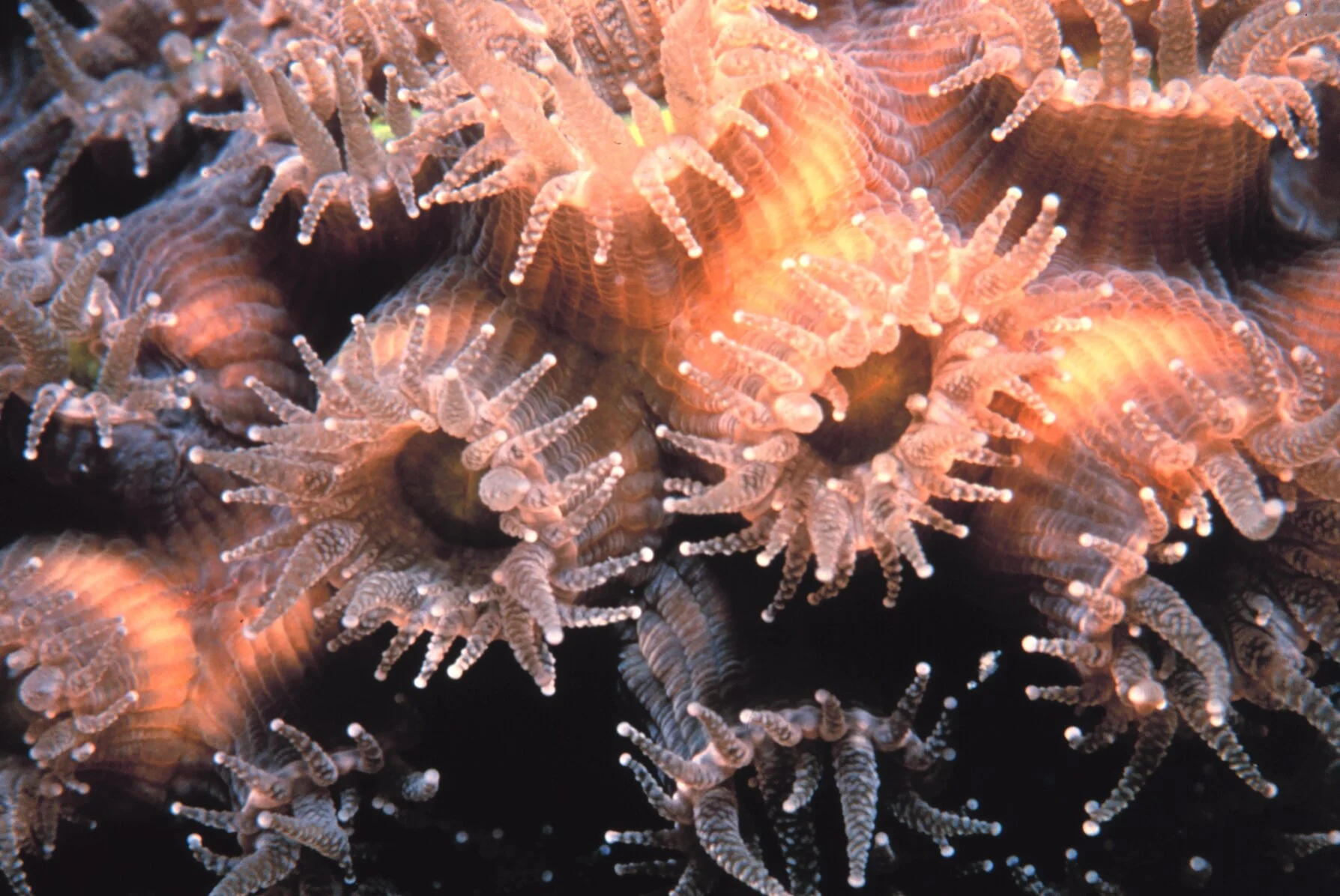Coral Reefs: The Rainforests of the Sea
“So imagine the global economy faces a loss of $1 trillion and nearly one billion people lose access to an ecosystem that provides them with food and jobs—that is roughly what we may see if coral reefs continue to disappear at the alarming rate they are today.”
What are coral reefs?
When you hear ‘coral reef,’ you might picture colorful reefs in turquoise waters, teeming with fish and other marine life. But how do these structures form—what makes a coral reef?
Coral reefs are made up of colonies of thousands of little organisms called polyps. They look like little suction cups with tentacles that reach out to grab food and defend themselves from prey.
Image by: Brent Deuel
And over time these little guys release something called calcium carbonate—forming their ‘skeleton.’ These large ‘skeletons’ that hard corals build are the foundation of coral reefs. But it takes a LONG time to form extensive coral reefs…in fact it can take thousands of years.
Photosynthetic algae, called zooxanthellae lives inside of corals tissue and they have a mutualistic relationship, meaning both the coral and the algae benefit from this relationship. The algae produce oxygen and provide the coral with nutrients, and the coral provides an environment for the algae to live in. These algae are also what gives coral reef their color—the amazing tropical reef colors are all thanks to these algae.
Have you ever seen bleached coral? This is coral that has become stressed and has expelled the algae from its tissues, which ultimately results in the coral’s death. Unfortunately, this is becoming far too common these days due to ocean acidification and warmer sea temperatures. One example of a damaged reef is the beautiful Great Barrier Reef, which now has large areas that have been completely bleached and lack life.
Why are coral reefs so important?
According the UN, in 2017 2.4 billion people lived within 60 miles of the coast. Some estimates say 1 billion people globally rely on coral reefs for getting their food. Coral reefs in the US alone had an economic value of 3.4 billion. Why are they such highly valued ecosystems?
Coral reefs are like the rainforests of the sea—flourishing with life. They cover 0.1% of the Earth’s surface but are home to millions of species of marine life. Over 4,000 species of fish rely on coral reefs.
Coral reefs:
Provide habitat and food for millions of species
Have incredible biodiversity
Support more than 4,000 species of fish
Many drugs and possible cures for cancer, arthritis, etc. are developed from the plants and animals that inhabit coral reefs
Have huge economic value for local economies through ecotourism, diving tours, fishing, etc.
Commercial and recreational fisheries depend on them
Buffer shorelines from erosion, storms (coastal protection)
Unfortunately, coral reefs all over the world are now viewed as threatened ecosystems from anthropogenic activities (climate change, pollution, destructive fishing practices…).
What does this mean for us? Well coral reefs have been estimated to have an asset value of almost $1 trillion, due to all the goods and services they provide us. So imagine the global economy faces a loss of $1 trillion and almost one billion people lose access to an ecosystem that provides them with food and jobs—that is roughly what we may see if coral reefs continue to disappear at the alarming rate they are today. While a vision of the future is hard to predict, there is no doubt that we are jeopardizing the livelihood and health of millions (to billions) of people if we don’t mitigate climate change and protect our coral reefs.
Coral reefs are so incredible and important for marine life, as well as for humanity, and the protection of these ecosystems is necessary for a healthy ocean.
Sources:
Hoegh-Guldberg, O., Poloczanska, E. S., Skirving, W., & Dove, S. (2017). Coral Reef Ecosystems under Climate Change and Ocean Acidification. Frontiers in Marine Science,4. doi:10.3389/fmars.2017.00158
Hooidonk, R. V., Maynard, J., Tamelander, J., Gove, J., Ahmadia, G., Raymundo, L., . . . Planes, S. (2016). Local-scale projections of coral reef futures and implications of the Paris Agreement. Scientific Reports, 6(1). doi:10.1038/srep39666
Plaisance, L., Caley, M. J., Brainard, R. E., & Knowlton, N. (2011). The Diversity of Coral Reefs: What Are We Missing? PLoS ONE, 6(10). doi:10.1371/journal.pone.0025026
https://oceanservice.noaa.gov/education/kits/corals/coral01_intro.html
